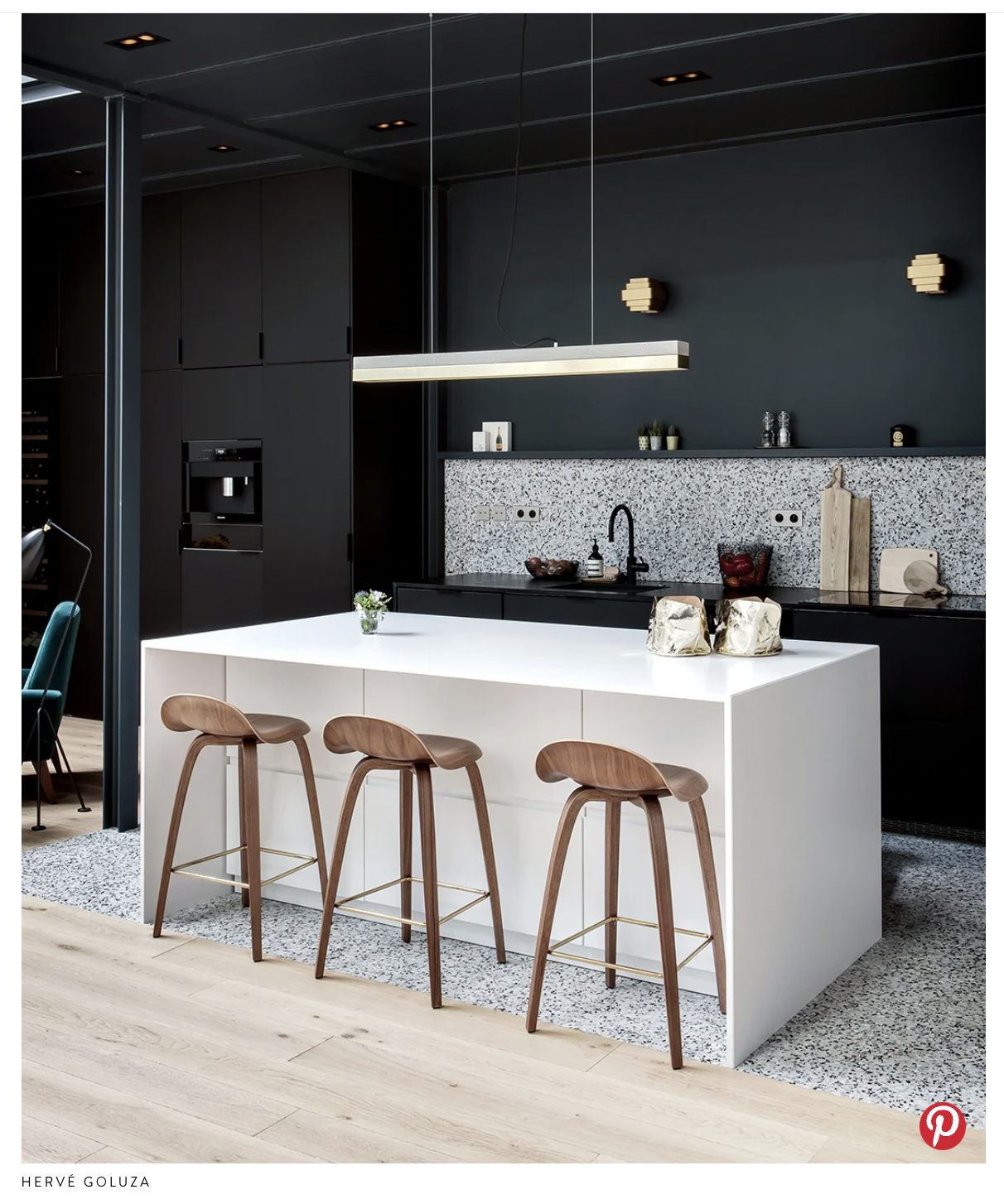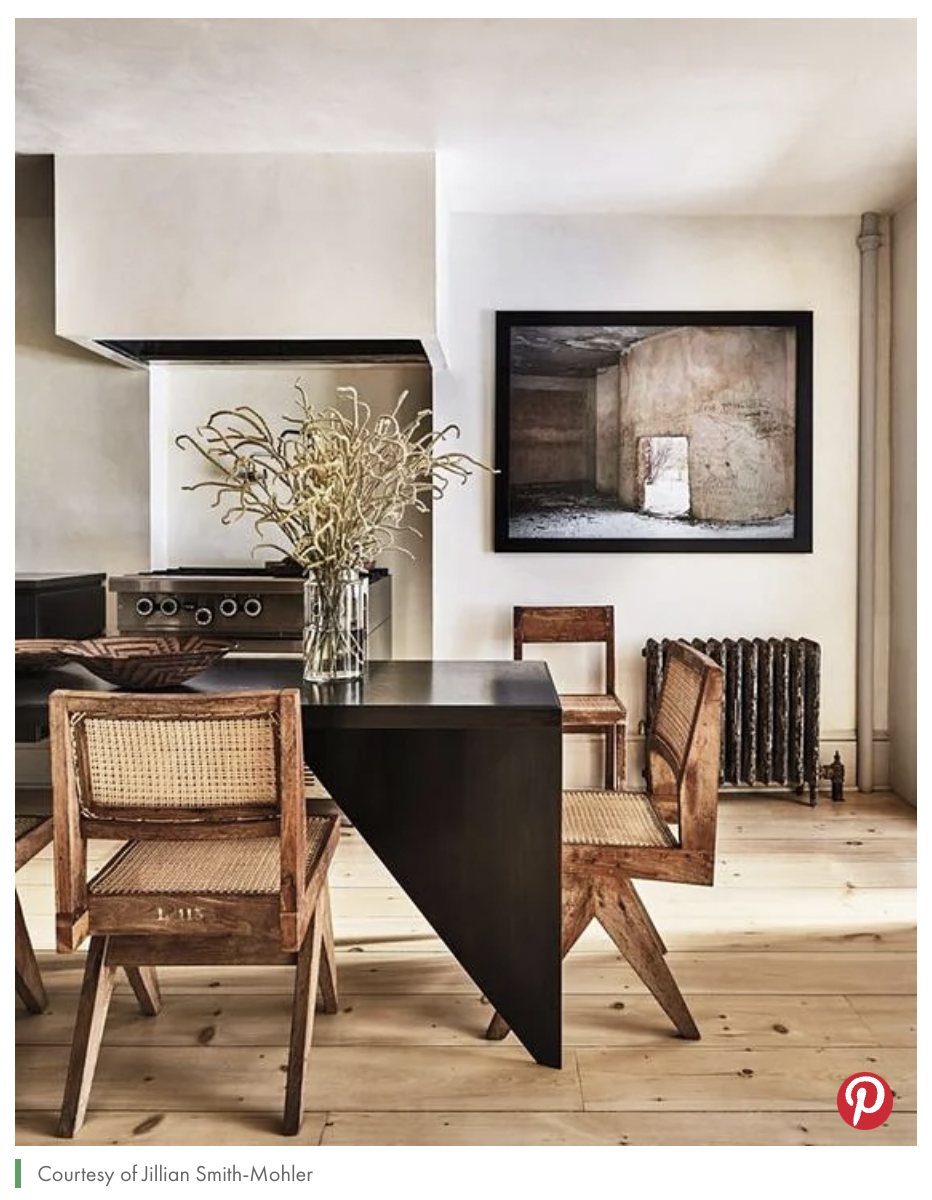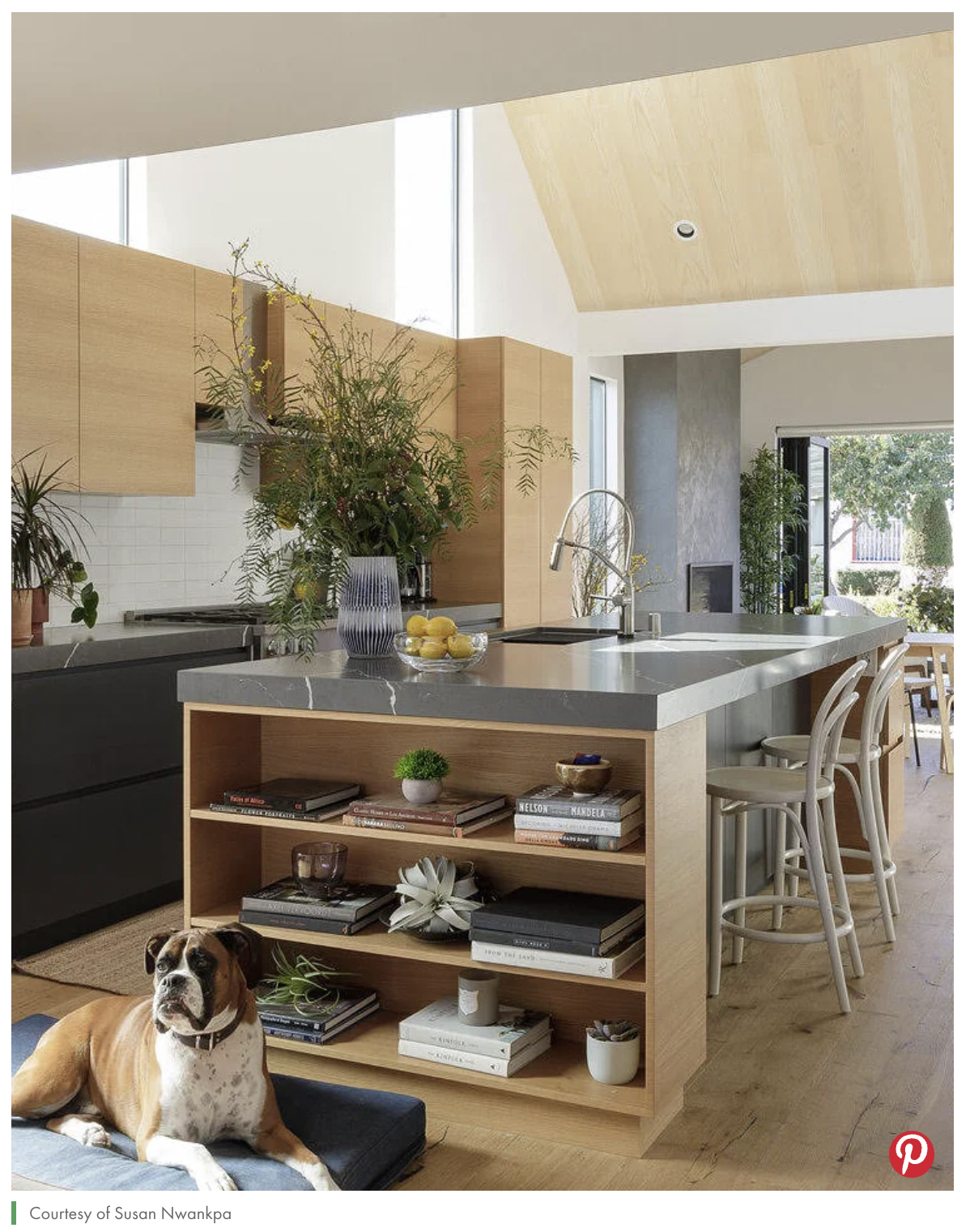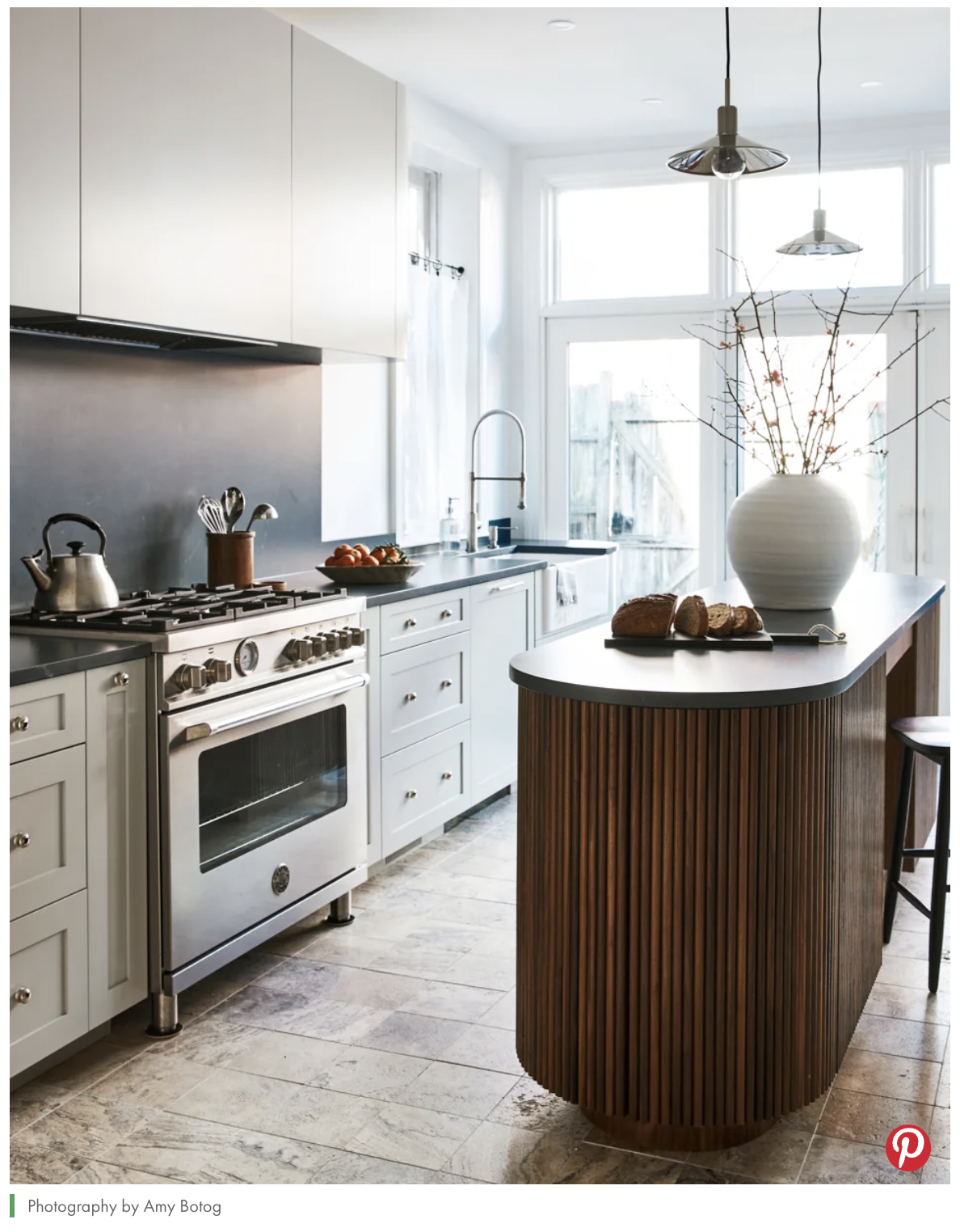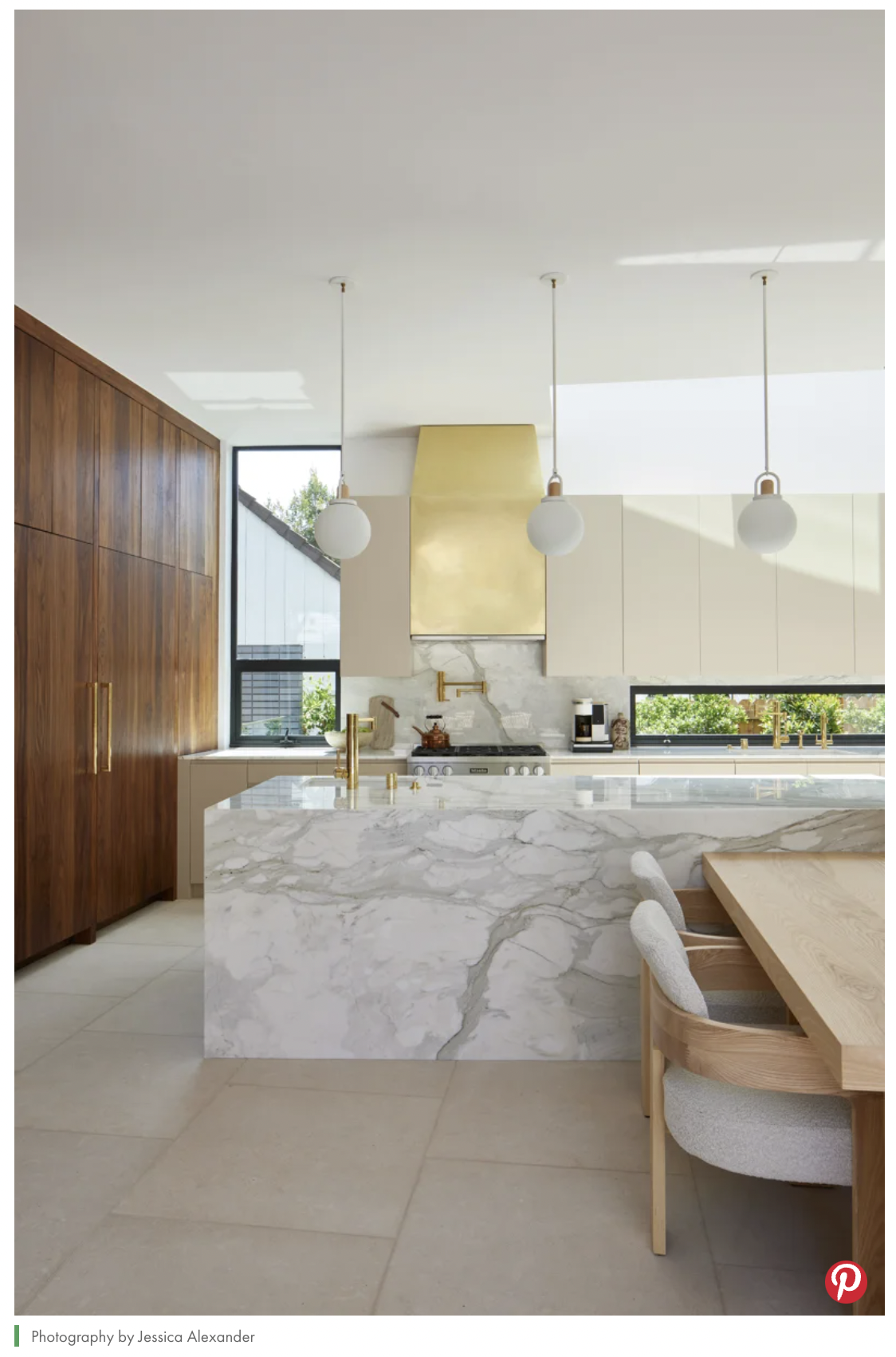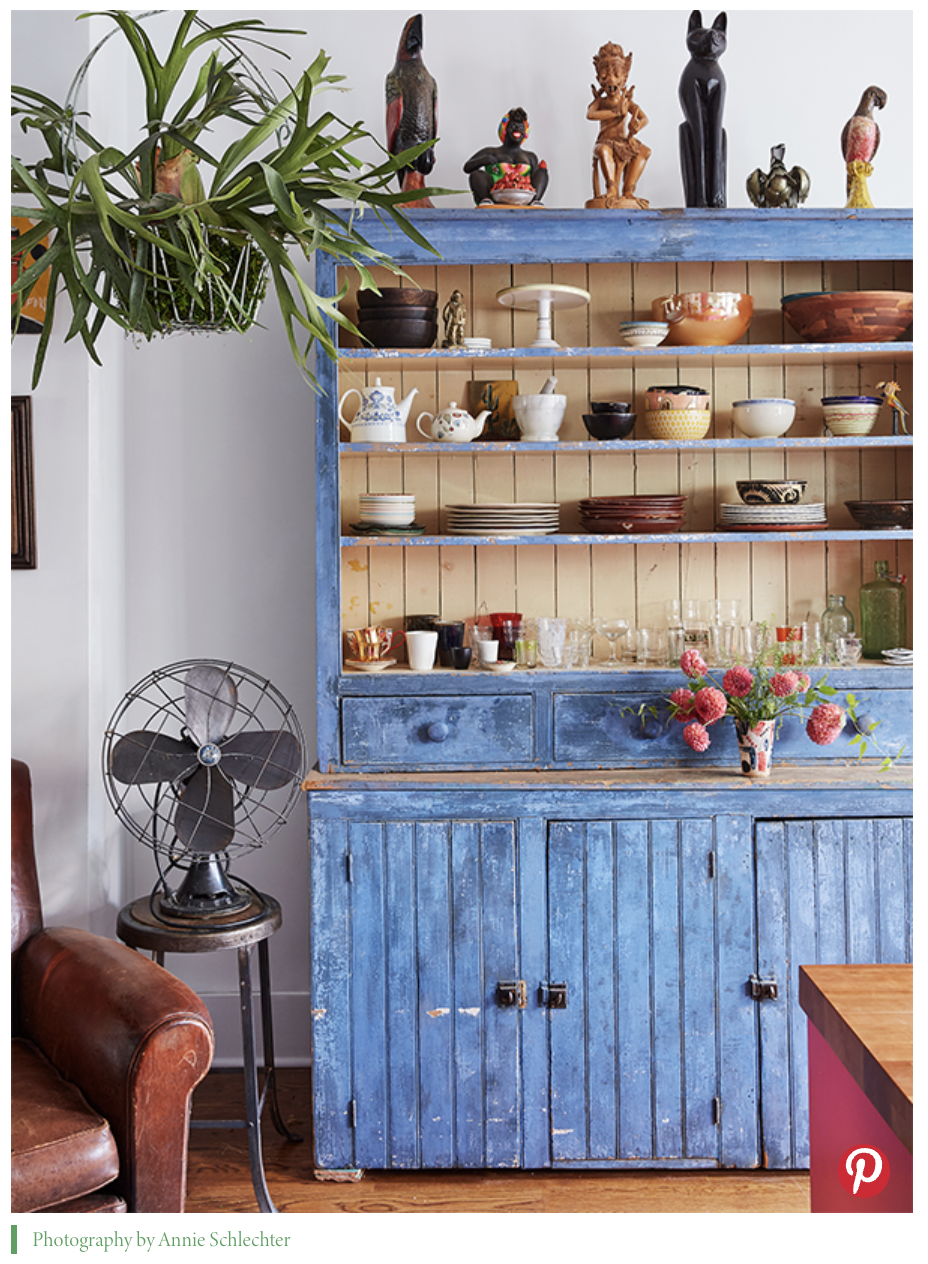Waterfall Countertops May Be the Latest Kitchen Trend…But What Comes Next?
Five designers give Domino their predictions.
First came the hands-free faucet, then the smart refrigerator, then poured concrete countertops. However, a kitchen island has always been a kitchen island…until the arrival of the waterfall countertop trend in 2020. Having the stone wrap over the sides down to the floor is now a mainstay in contemporary kitchens. Actor Adrian Grenier opted for white marble to contrast his Brooklyn brownstone’s natural oak cabinetry, while Aelfie Oudghiri went bold with wild navy veining in her colorful Long Island home. But kitchen islands will only continue to evolve, so we asked five designers and architects what they think the next big iteration will be.
Bringing in the Dining Table
We have found that the one area in a home that clients comment they never use is the dining room. People live in their kitchen and spend most of their time at the island. Island seating is not conducive to conversation, though, and counter stools can get uncomfortable after a while. One trend that we think is on the cusp of taking off is eliminating the dining room altogether and putting the dining table in the kitchen, in place of an island. The result is ultra-casual and effortlessly cool.—Jillian Smith-Mohler, cofounder of Twenty-Two Twelve
Treating It Like Furniture
Waterfall islands aren’t going anywhere anytime soon. They’re a beautiful way to showcase a stunning piece of stone and a key gathering area. However, I do think they’re getting more interesting, and we’ll be seeing more refined details and uses beyond purely kitchen storage, like added shelving on the sides that will blur the line with furniture and better blend in.—Susan Nwankpa, founder of Nwankpa Design
Bending the Rules
Waterfall islands are all about the finished ends of your cabinetry. We’ve had a lot of fun with curves lately! Whether it’s a painted finish or tamboured walnut—curved cabinetry creates a modern yet elegant vibe. —Kevin Bennert, cofounder of Oak Design Project
Looking Up
Vent hoods with pizzazz feels like the next wave to me. Designers and homeowners are thinking out of the box and finding inventive ways to clad theirs with wood, plaster, stone, and brass. Anything goes, and I’m here to witness the creative expression. —Natalie Myers, owner of Veneer Designs
Toning Down the Modernity
I’m anticipating and loving the more frequent inclusion of stand-alone furnishings in kitchen spaces. Whether that be a vintage weathered butcher block island or glass-front curio cabinet and hutch, I am expecting to see kitchens trending back to a less slick, more comfortable and collected feeling. —Megan Hopp, founder of Megan Hopp Designs
Subscribe to Domino Magazine for more amazing content like this!
Related Links
If there is a home that you would like more information about, if you are considering selling a property, or if you have questions about the housing market in your neighborhood, please reach out. We’re here to help.

